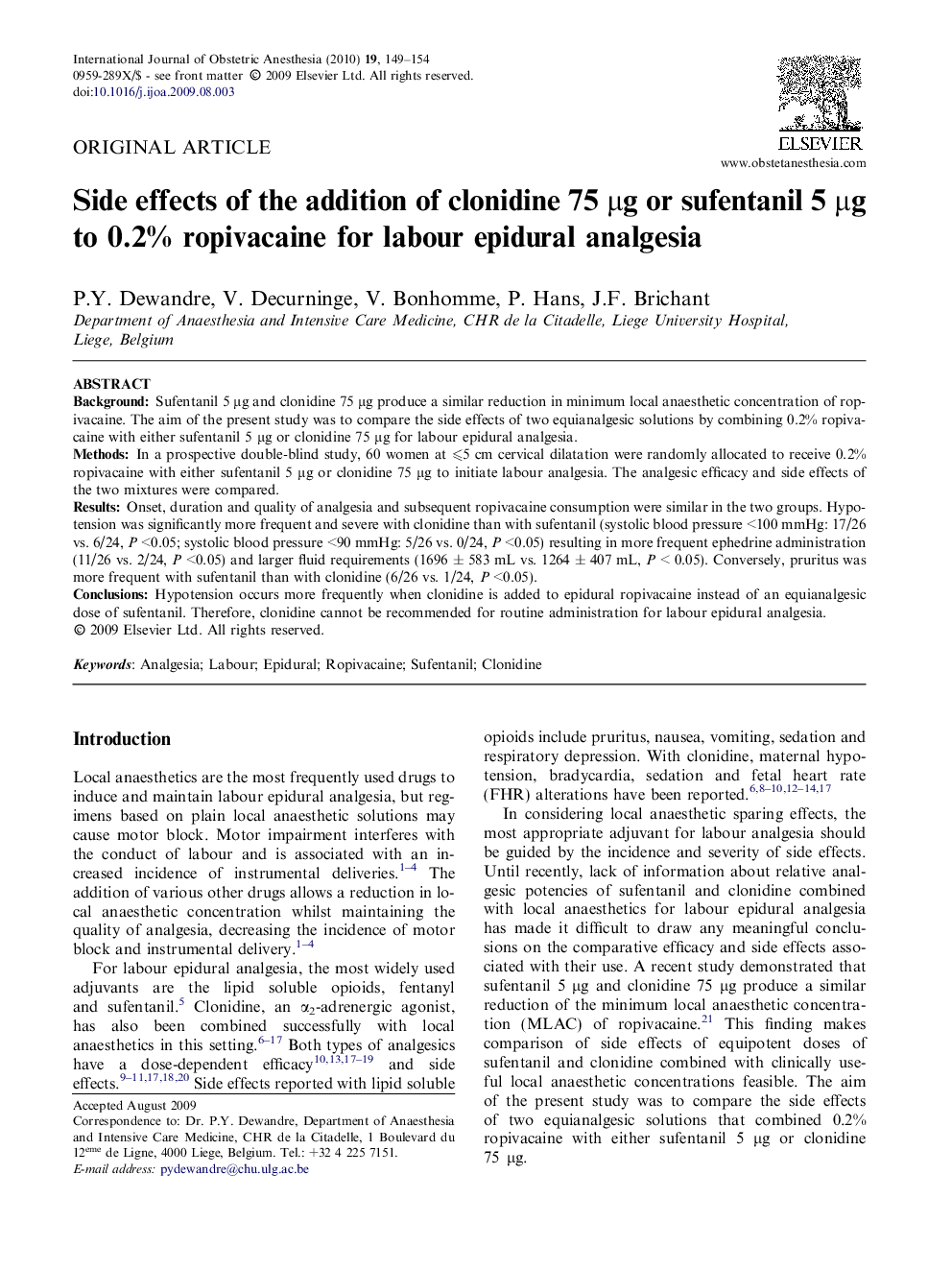| Article ID | Journal | Published Year | Pages | File Type |
|---|---|---|---|---|
| 2757983 | International Journal of Obstetric Anesthesia | 2010 | 6 Pages |
BackgroundSufentanil 5 μg and clonidine 75 μg produce a similar reduction in minimum local anaesthetic concentration of ropivacaine. The aim of the present study was to compare the side effects of two equianalgesic solutions by combining 0.2% ropivacaine with either sufentanil 5 μg or clonidine 75 μg for labour epidural analgesia.MethodsIn a prospective double-blind study, 60 women at ⩽5 cm cervical dilatation were randomly allocated to receive 0.2% ropivacaine with either sufentanil 5 μg or clonidine 75 μg to initiate labour analgesia. The analgesic efficacy and side effects of the two mixtures were compared.ResultsOnset, duration and quality of analgesia and subsequent ropivacaine consumption were similar in the two groups. Hypotension was significantly more frequent and severe with clonidine than with sufentanil (systolic blood pressure <100 mmHg: 17/26 vs. 6/24, P <0.05; systolic blood pressure <90 mmHg: 5/26 vs. 0/24, P <0.05) resulting in more frequent ephedrine administration (11/26 vs. 2/24, P <0.05) and larger fluid requirements (1696 ± 583 mL vs. 1264 ± 407 mL, P < 0.05). Conversely, pruritus was more frequent with sufentanil than with clonidine (6/26 vs. 1/24, P <0.05).ConclusionsHypotension occurs more frequently when clonidine is added to epidural ropivacaine instead of an equianalgesic dose of sufentanil. Therefore, clonidine cannot be recommended for routine administration for labour epidural analgesia.
